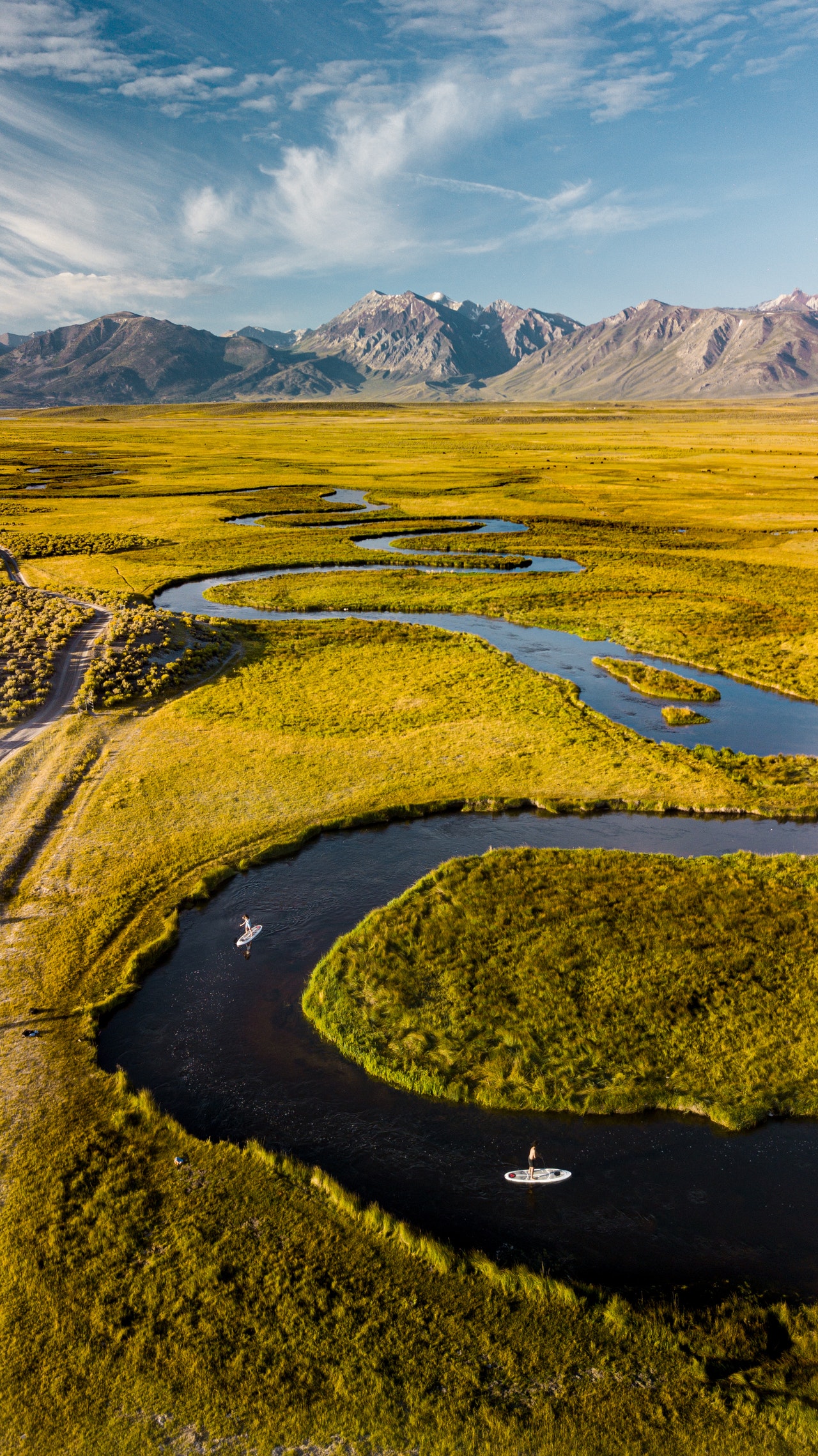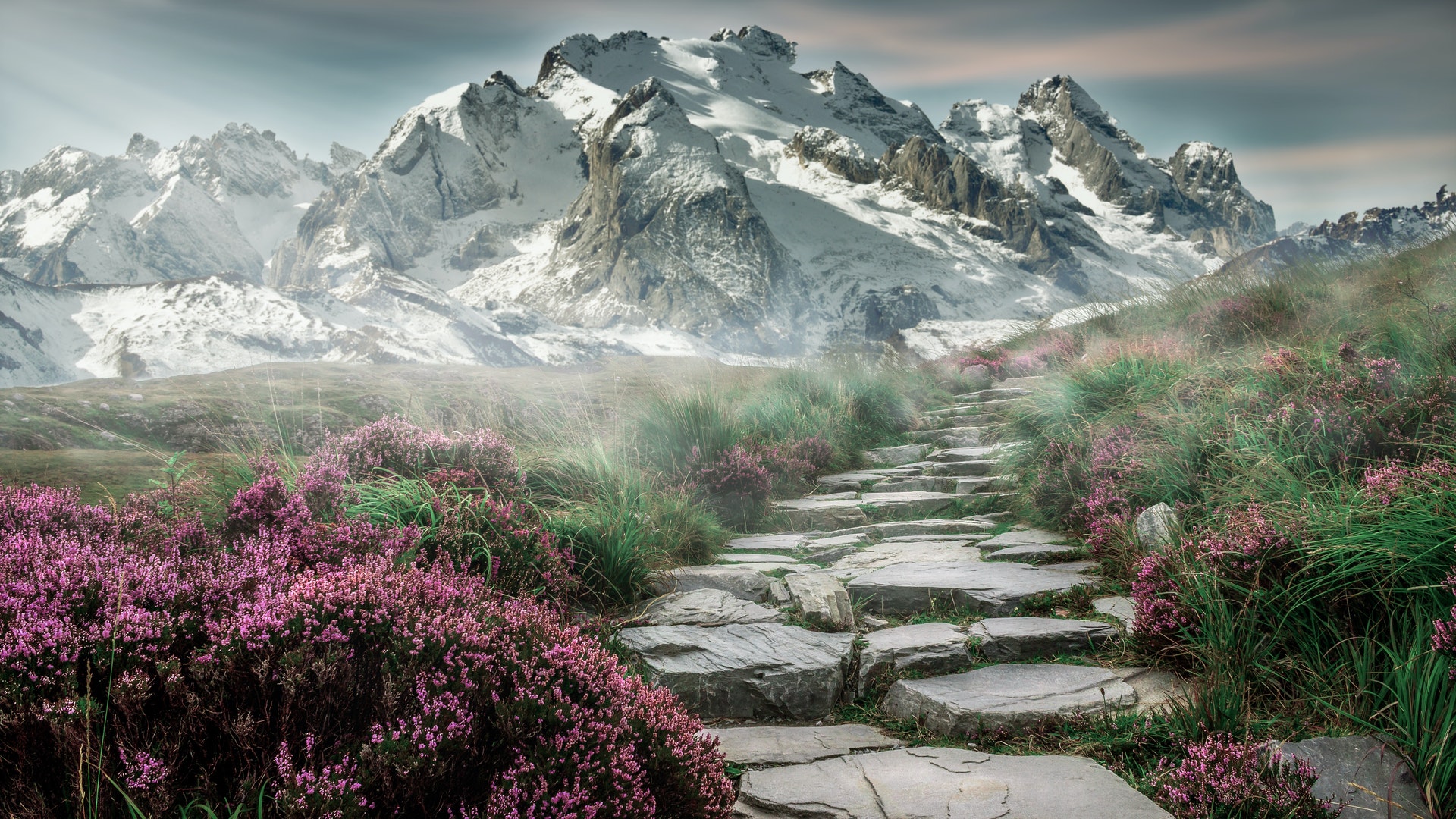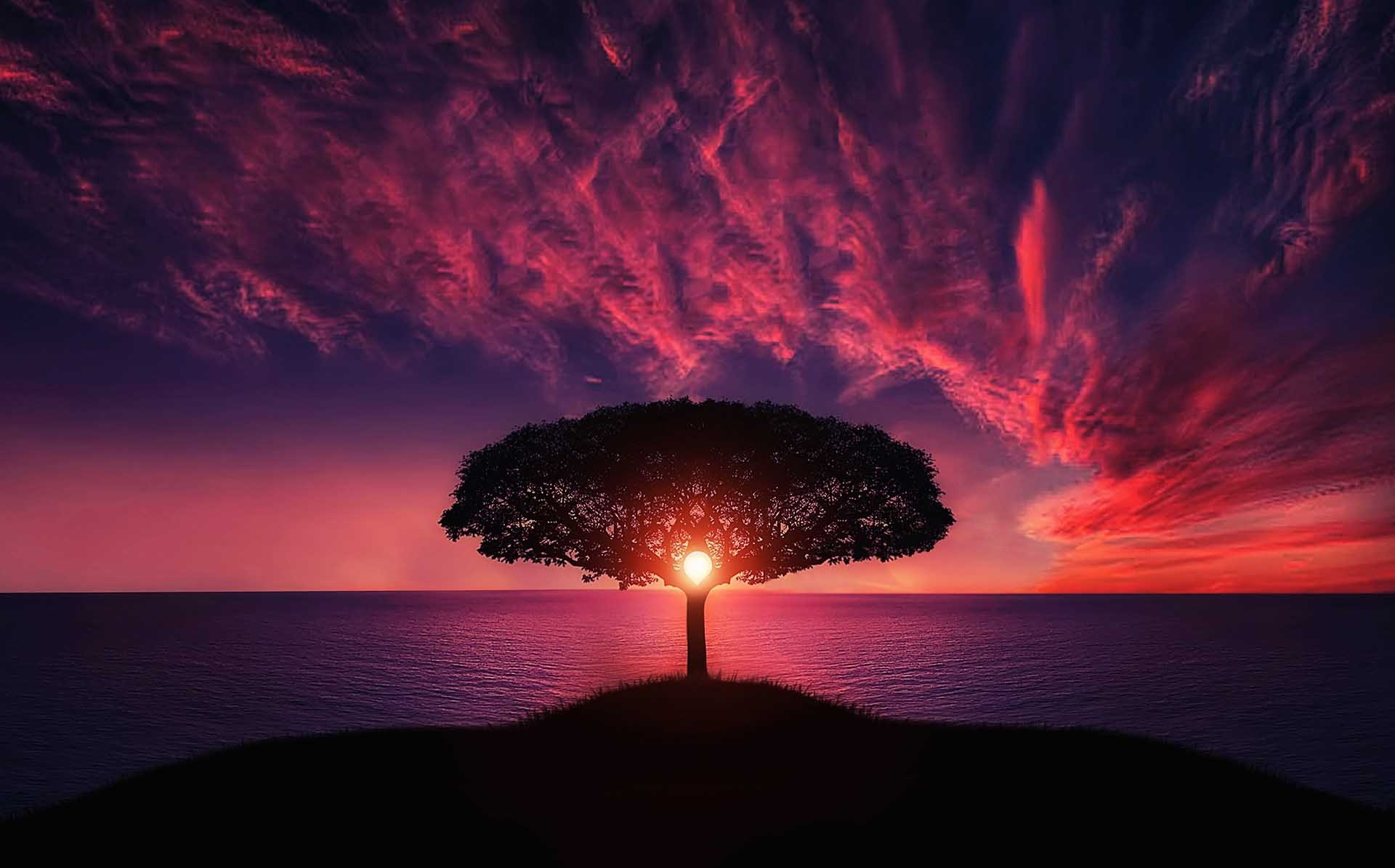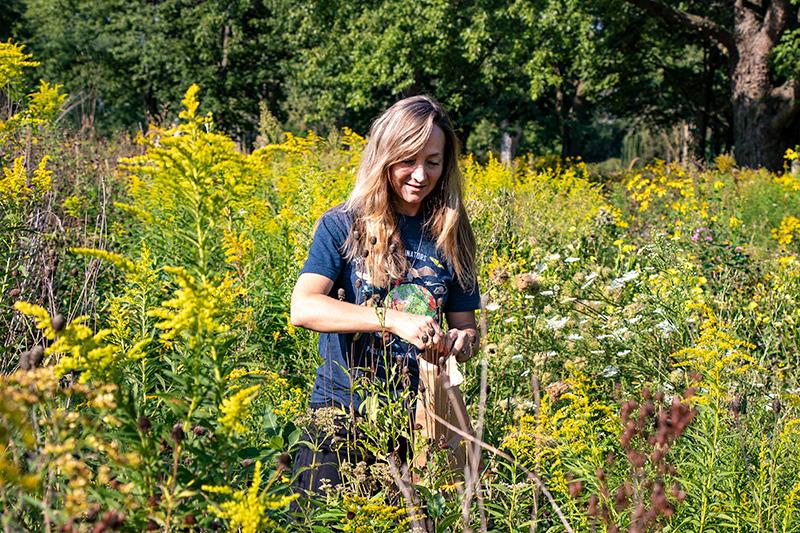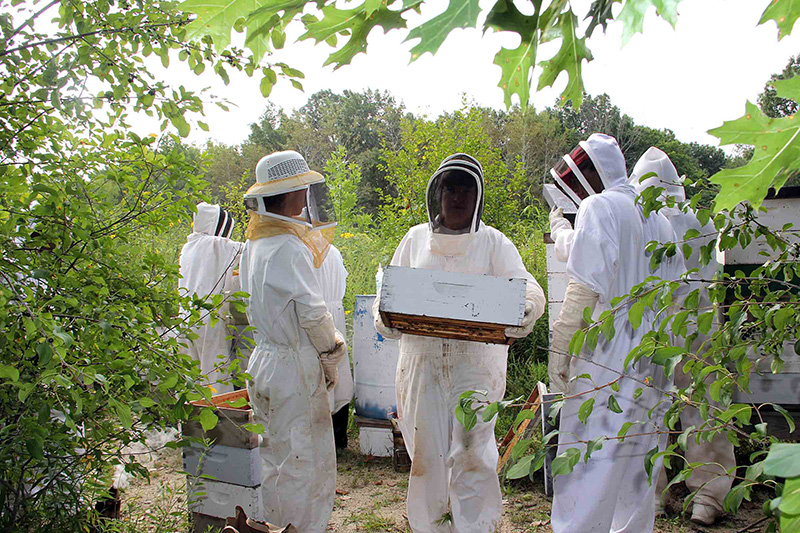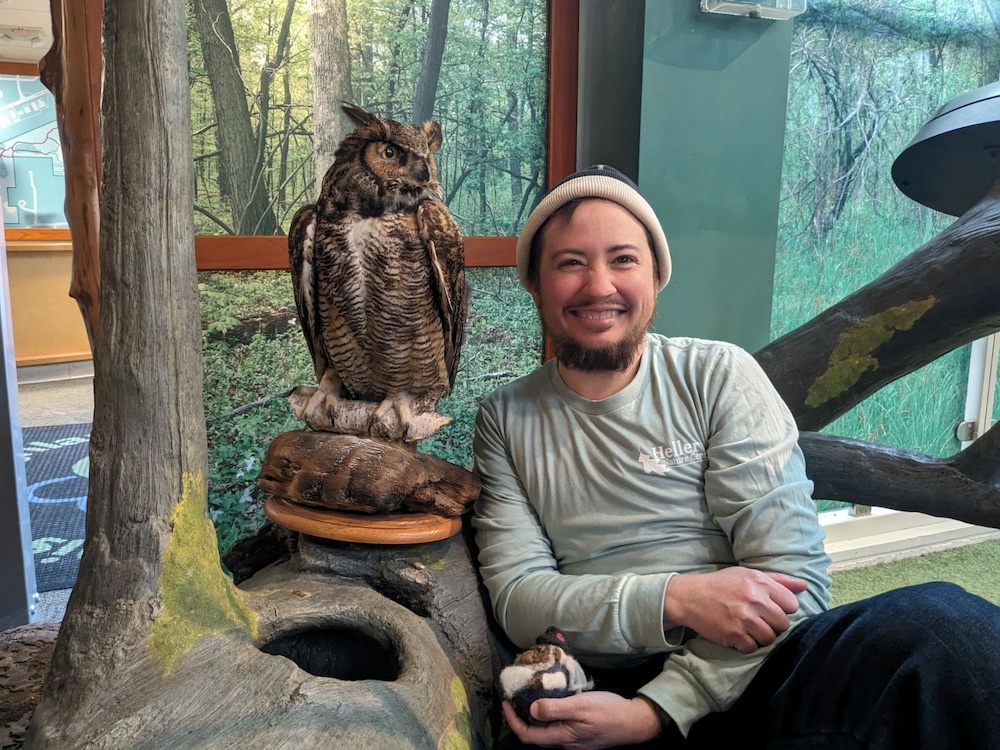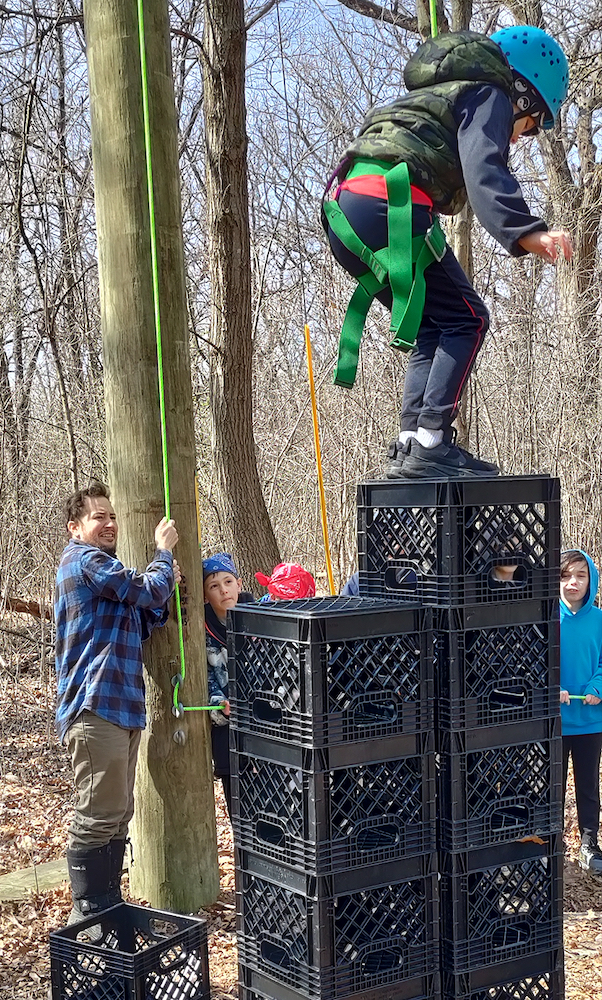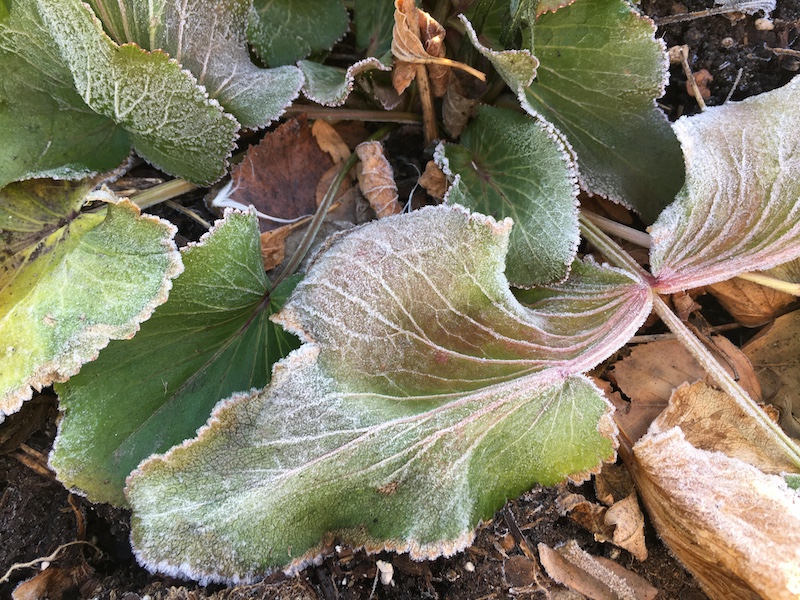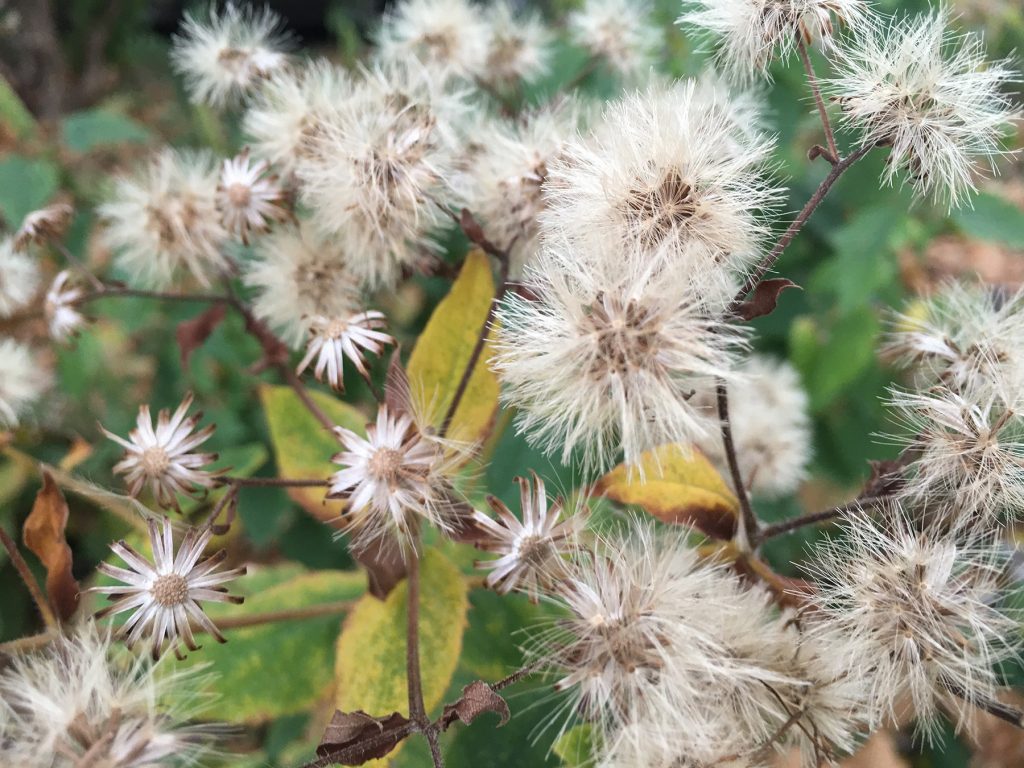The fall sweet treat is on sale now at Heller Nature Center, the Recreation Center of Highland Park, and Madame Zuzu’s. After a slim honey harvest last year, the Heller staff made some adjustments to help our bees yield a more fruitful—or, rather, flowerful honey yield this season.
“Last year, our concern was with how hot things were, how dry things ended up being, that the flowers came in a bit later in the early summer,” Mark Bryant, Naturalist at Heller Nature Center, said. “So even though the weather this summer was like last summer, we helped our bees along with a sugar syrup to get them through that dry period. We took the sugar syrup away once the flowers came in, and we saw lots of nectar flowing in.”
This early feeding, along with a bit more rain resulting in more flowers for the bees to forage, allowed Heller Nature Center to harvest around 350 lbs. of honey, compared to last year’s meager 75 lbs.
What is it about Heller Honey?
They say variety is the spice of life—in this case, it’s the sweetness, too! But not overly sweet, like most store-bought honey can be. That’s because most mass-produced honey comes from bees that forage from a single flower variety, usually white clover. This produces an overly sweet, sugary honey. Contrarily, Heller bees gather nectar from a variety of local plants including bee balm, linden, acacia, honeysuckle, and other fragrant blossoms, resulting in a more flavorful, balanced honey.
“Our honey has a bit more of an herbal sort of flavor to it. It’s more of a mix,” Bryant said. “It’s because it’s a mix of different wild prairie flowers; the amount and the types of flowers that the bees are harvesting from does affect the flavor and the color of your honey.”
And local honey that comes from a variety of wildflowers has more benefits than just a unique flavor. According to Bryant, there’s evidence to support that if you eat native honey to your local area, it can assist with some allergies.
“Let’s say you’re allergic to some of the flowers that grow on our prairie—because you’re eating honey that has been made by bees from those flowers, it does sort of set your system up to handle those allergies a little bit better,” Bryant said. Additionally, local honey contains various vitamins, minerals, and antioxidants that can contribute to a healthy diet and overall wellness.
The Harvesting Process
While the bees have done much of the work by the time the annual harvest rolls around, the honey harvest process involves careful steps to gather the delicious product. The first step is getting it in the building while avoiding bringing any of the bees in with it. An almond-based solution is wafted into the beehive, repelling the bees and pushing them into the lower sections of the hive.
After gently clearing the frames of bees, the beekeepers use heated tools to unseal the honeycomb cells, exposing the honey. The uncapped frames are then placed in a honey extractor, which uses centrifugal force to extract honey without damaging the comb. The extracted honey is strained to remove impurities before being bottled for storage and consumption. The empty frames are returned to the hive for the bees to reuse. This process not only provides delicious Heller Honey, but also supports the bees’ natural behaviors and contributes to the overall health of the hive.
Now What?
Now that this year’s honey has been harvested, what happens to the bees? Post-harvest, it’s all about getting them ready for winter.
Controlling pests before winter is vital; some quick mite treatments are performed to make sure that while the bees are trying to hibernate, they’re not also trying to fight off other creatures. It’s also time to start feeding them again; a two-to-one sugar syrup will ensure that they have the nutrients to make lots of food before it’s time to start hibernating.
Once it is time to start hibernating, it’s essential to ensure that the hive is well-insulated to prevent heat loss. This is achieved by reducing the hive’s entrance size and wrapping it in special quilts that help keep all that warm air trapped inside. Once these preparations are complete, there’s nothing left to do but let the bees hibernate.
“Once you start to get below 60, 55 degrees, it’s critical that they not be disturbed, or they’ll lose all that heat. They spend a lot of time trying to maintain that temperature keeping mostly the Queen and the rest of the hive warm. So we get them set to go, and we wait for the temperature to come back up before we start looking back and seeing how they did.”
Make sure to pick up your jar of Heller Honey before it’s all gone! On sale now at Heller Nature Center (Tue 11:30am-5pm, Wed-Fri 10:30am-5pm, Sat 9am-3pm), the Recreation Center of Highland Park (Mon-Thu 5:30am-9pm, Fri 5:30am-8pm, Sat and Sun 7am-5pm), and Madame Zuzu’s (Mon-Wed 8:30am-5pm, Thu-Sat 8:30am-8pm, Sun 8:30am-4pm). To learn more about Heller Nature Center, visit pdhp.org.

